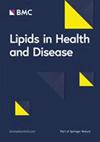邻里步行能力与血脂之间的关系:一项加拿大人口研究
IF 3.9
2区 医学
Q2 BIOCHEMISTRY & MOLECULAR BIOLOGY
引用次数: 0
摘要
我们研究了步行能力与血脂之间的关系,研究对象是参加加拿大健康测量调查(CHMS)第 1 至第 6 周期的 29,649 名年龄在 3-79 岁之间的全国代表性样本。我们重点研究了七种血脂生物标志物:载脂蛋白 A (载脂蛋白 A)、载脂蛋白 B (载脂蛋白 B)、甘油三酯 (TG)、高密度脂蛋白胆固醇 (HDL)、低密度脂蛋白胆固醇 (LDL)、总胆固醇 (TC) 和 TC/HDL。采用广义线性混合模型对横截面关联进行了分析,并纳入了特定调查的抽样权重。加拿大积极生活环境指数是衡量邻里步行能力的指标,该指数的增加相当于其四分位数间距 (IQR) 的大小,与血脂的以下百分比(95% 置信区间 (CI))变化相关:总胆固醇 (TG) 降低 -2.85 (-4.77, -0.93),总胆固醇/高密度脂蛋白 (TC/HDL) 降低 -1.68 (-2.80, -0.56),高密度脂蛋白 (HDL) 增加 1.68 (0.93, 2.42)。显著影响主要限于成年人(17 至 79 岁)。在年龄较小的人群中,步行能力与血脂之间在完全调整模型中没有显著关联。女性比男性更容易出现显著的关联。对于女性来说,经完全调整后,总胆固醇、低密度脂蛋白和总胆固醇/高密度脂蛋白呈显著的反向关系,而高密度脂蛋白和载脂蛋白A呈正向关系。居住在步行环境较好的社区的加拿大人血脂状况更佳,这表明建筑环境有可能影响心血管健康的风险状况,尤其是在成年人和女性中。对加拿大健康措施调查的参与者进行了血脂测量。通过加拿大积极生活指数测量了邻里步行能力。步行能力的提高与较低的 TG 和 TC/HDL 以及较高的 HDL 有关。这种有利的关联在女性中更为常见。增加步行能力可改善心血管风险状况。本文章由计算机程序翻译,如有差异,请以英文原文为准。
The association between neighbourhood walkability and blood lipids: a Canadian population study
We examined the association between walkability and blood lipids in a nationally representative sample of 29,649 participants aged 3–79 years who participated in the Canadian Health Measures Survey (CHMS) cycles 1 to 6. We focused on seven lipid biomarkers: apolipoprotein A (Apo A), apolipoprotein B (Apo B), triglycerides (TG), high-density lipoprotein cholesterol (HDL), low-density lipoprotein cholesterol (LDL), total cholesterol (TC), and TC/HDL. Cross-sectional associations were analyzed using generalized linear mixed models incorporating survey-specific sampling weights. An increase in the Canadian Active Living Environments Index, a measure of neighborhood walkability, equivalent to the magnitude of its interquartile range (IQR) was associated with the following percentage (95% confidence intervals (CI)) changes in lipids: decreased TG, -2.85 (-4.77, -0.93) and TC/HDL, -1.68 (-2.80, -0.56), and increased HDL, 1.68 (0.93, 2.42). Significant effects were largely restricted to adults (aged 17 to 79). In the younger age group there were no significant associations between walkability and lipids in the fully adjusted model. Significant associations were more frequently seen in females than males. For females, fully adjusted significant inverse associations were observed for TG, LDL, and TC/HDL, and there were positive associations with HDL and Apo A. Canadians living in more walkable neighborhoods have more favorable lipid profiles, suggesting that the built environment has the potential to influence the risk profile for cardiovascular health, especially among adults and females. Blood lipids were measured in participants of the Canadian Health Measures Survey. Neighborhood walkability was measured by the Canadian Active Living Index. Increased walkability was associated with lower TG and TC/HDL and higher HDL. Favourable associations were more common in females. Increased walkability may improve cardiovascular risk profiles.
求助全文
通过发布文献求助,成功后即可免费获取论文全文。
去求助
来源期刊

Lipids in Health and Disease
生物-生化与分子生物学
CiteScore
7.70
自引率
2.20%
发文量
122
审稿时长
3-8 weeks
期刊介绍:
Lipids in Health and Disease is an open access, peer-reviewed, journal that publishes articles on all aspects of lipids: their biochemistry, pharmacology, toxicology, role in health and disease, and the synthesis of new lipid compounds.
Lipids in Health and Disease is aimed at all scientists, health professionals and physicians interested in the area of lipids. Lipids are defined here in their broadest sense, to include: cholesterol, essential fatty acids, saturated fatty acids, phospholipids, inositol lipids, second messenger lipids, enzymes and synthetic machinery that is involved in the metabolism of various lipids in the cells and tissues, and also various aspects of lipid transport, etc. In addition, the journal also publishes research that investigates and defines the role of lipids in various physiological processes, pathology and disease. In particular, the journal aims to bridge the gap between the bench and the clinic by publishing articles that are particularly relevant to human diseases and the role of lipids in the management of various diseases.
 求助内容:
求助内容: 应助结果提醒方式:
应助结果提醒方式:


